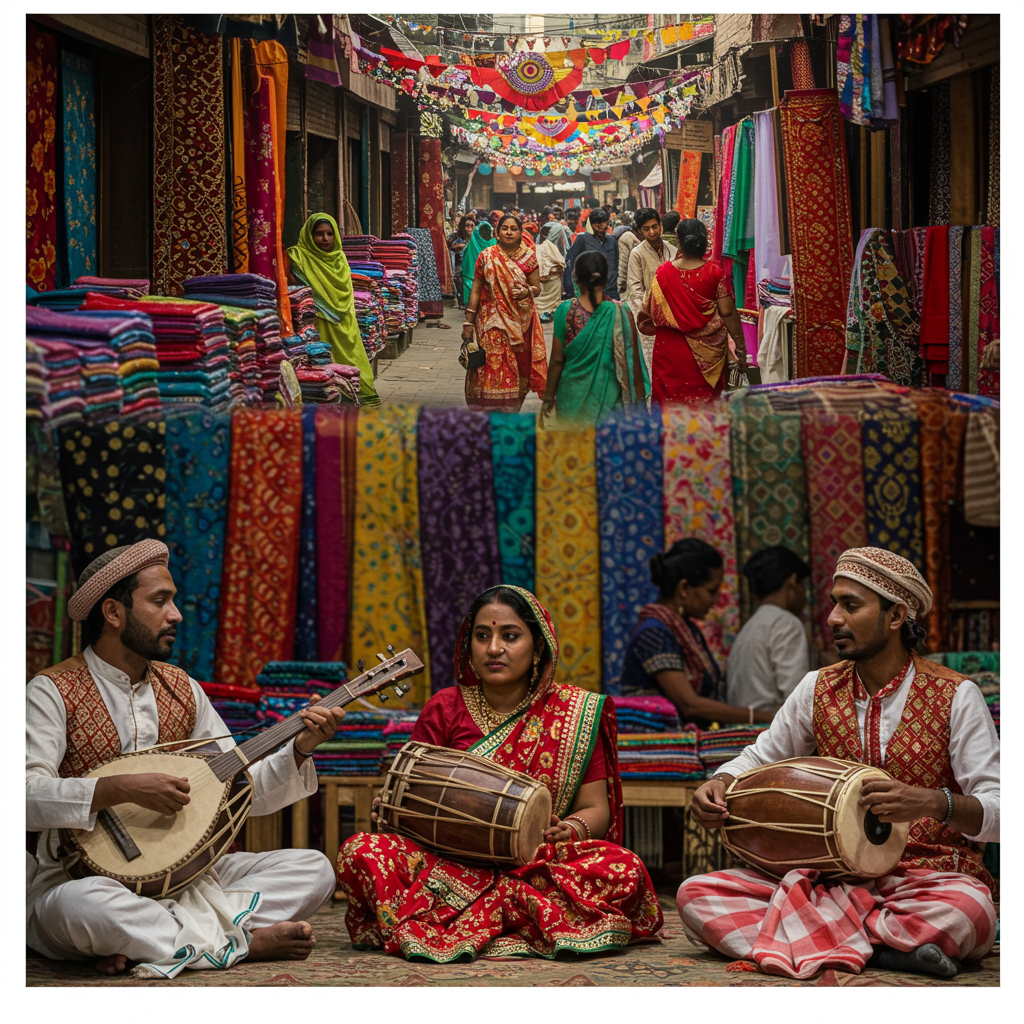Culture and Traditions of Bangladesh: A Living Tapestry of History, Faith, and Art
"From Baul music and Tagore’s poetry to Bengali hospitality and vibrant festivals — a culture that shapes the national identity of Bangladesh."
In the heart of South Asia, where rivers weave across fertile plains, lies a land whose culture flows as richly as its waters: Bangladesh. This nation is not just a geographical space but a living story of traditions, arts, and values crafted through centuries of history.
From the mystical Baul songs echoing through village squares to the poetry of Rabindranath Tagore and the colorful patterns of handwoven fabrics, Bengali culture reflects a layered identity — deeply rooted yet open to modern influences.
The people of Bangladesh are renowned for their warmth and hospitality, their reverence for family ties, and their celebration of life through art, music, and festivals. This article explores the many dimensions of Bangladeshi culture, highlighting how tradition, faith, and creativity converge to give this nation its soft power and global appeal.
1. Historical Roots and Cultural Heritage
Bangladesh’s culture has evolved under the influence of ancient civilizations, Islamic heritage, and the colonial period, creating a unique blend of indigenous, Hindu, Muslim, and modern traditions.
2. Bengali Literature and Arts
Bangladeshi literature is celebrated worldwide through figures like Rabindranath Tagore and Kazi Nazrul Islam. Poetry and music have long served as the voice of the people, and literary festivals keep this heritage alive. Traditional Baul and Nazrul songs continue to inspire alongside modern music genres.
3. Social Etiquette and Family Values
Bangladeshis value mutual respect, hospitality, and strong family ties. Welcoming guests with traditional food is a cornerstone of social life. Greetings, family gatherings, and reverence for elders are integral to Bengali society.
4. Traditional Dress and Handicrafts
Women often wear saris while men wear lungis or panjabis, crafted from handwoven fabrics. Handicrafts such as jute products, pottery, and colorful textiles are not only cultural symbols but also support rural economies.
5. Religious Symbols and Cultural Festivals
While Islam is the dominant faith, Hindu and Buddhist festivals are celebrated with respect. Pohela Boishakh (Bengali New Year), Eid al-Fitr, and Eid al-Adha, along with music and art fairs, reflect a lively and diverse cultural spirit.
6. Cultural Diplomacy and Global Reach
Bangladesh uses its culture to strengthen international relations. Participation in global art events, translation of Bengali literature, and export of crafts have established the country as a cultural hub of South Asia.
Conclusion
The culture and traditions of Bangladesh are a vibrant reflection of its history, faith, and social values. Together, they form a powerful source of national identity and soft power.
By preserving its roots while embracing global trends, Bangladesh has shaped a multilayered culture that resonates beyond its borders — enriching both its regional role and its image on the world stage.





No comment